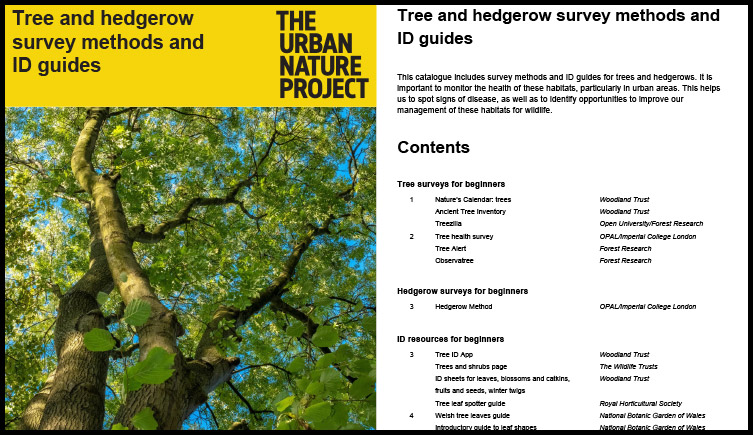Nature Recording Hub
Discover how to record the wildlife in your urban environment.

© velodenz, licensed under CC BY-NC-ND 2.0 via Flickr
It is important to monitor the health of these tree and hedgerows, particularly in urban areas.
This helps us to spot signs of disease, as well as to identify opportunities to improve our management of these habitats for wildlife.
This catalogue includes ID guides for trees and hedgerows, and survey methods for beginners and those with a little more experience.
Download the full catalogue (PDF 2.0MB), or read the highlights below.
Discover how to record the wildlife in your urban environment.

Download the full list of tree and hedgerow surveys and ID guides
Woodland Tust
Report a range of events relating to trees, from bud burst and first leaf to leaf fall. These events are recorded each year to help track the impact of climate change and weather on our trees.
When: year-round
OPAL (Open Air Laboratories) and Imperial College London
The survey includes three activities: identifying and assessing general tree characteristics; recording the presence of any pests and diseases on oak, horse chestnut and ash trees; and recording six of the most serious pests and disease threats.
When: roughly between April and October when trees are in leaf.
Equipment: the survey booklet, tape measure, magnifying glass.
OPAL (Open Air Laboratories)/Imperial College London
A guide to surveying hedgerows with survey forms included. The survey involves looking at the structure and management of the hedge, the shrubs and invertebrates present, and any other signs of wildlife using the hedgerow.
When: Roughly between April and October when the woody species in the hedgerow are in leaf.
Equipment: ID guides, tape measure, magnifier, and a pale collecting container (such as a white tray or a dustpan and brush). A pooter and spy pot are optional.